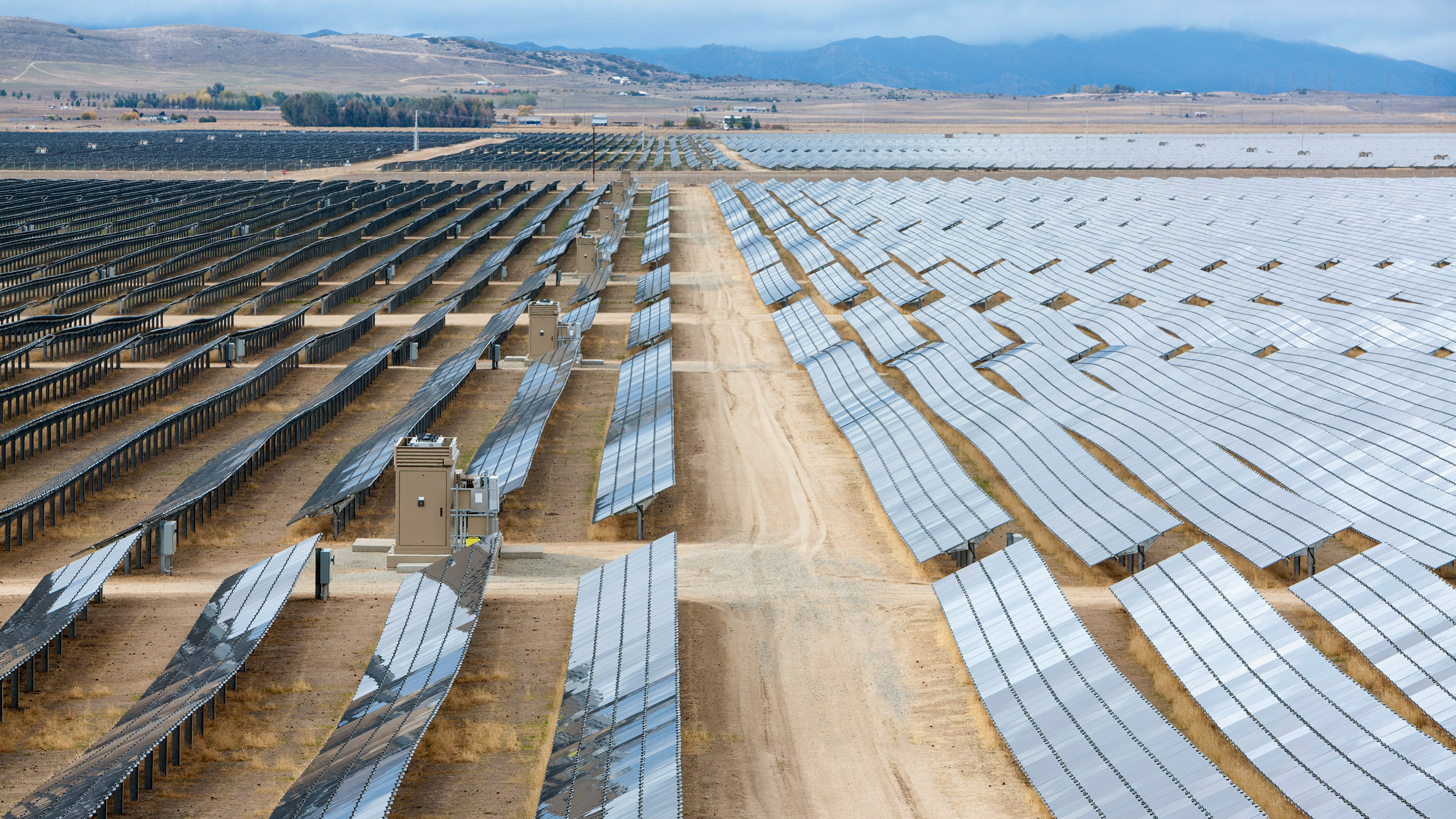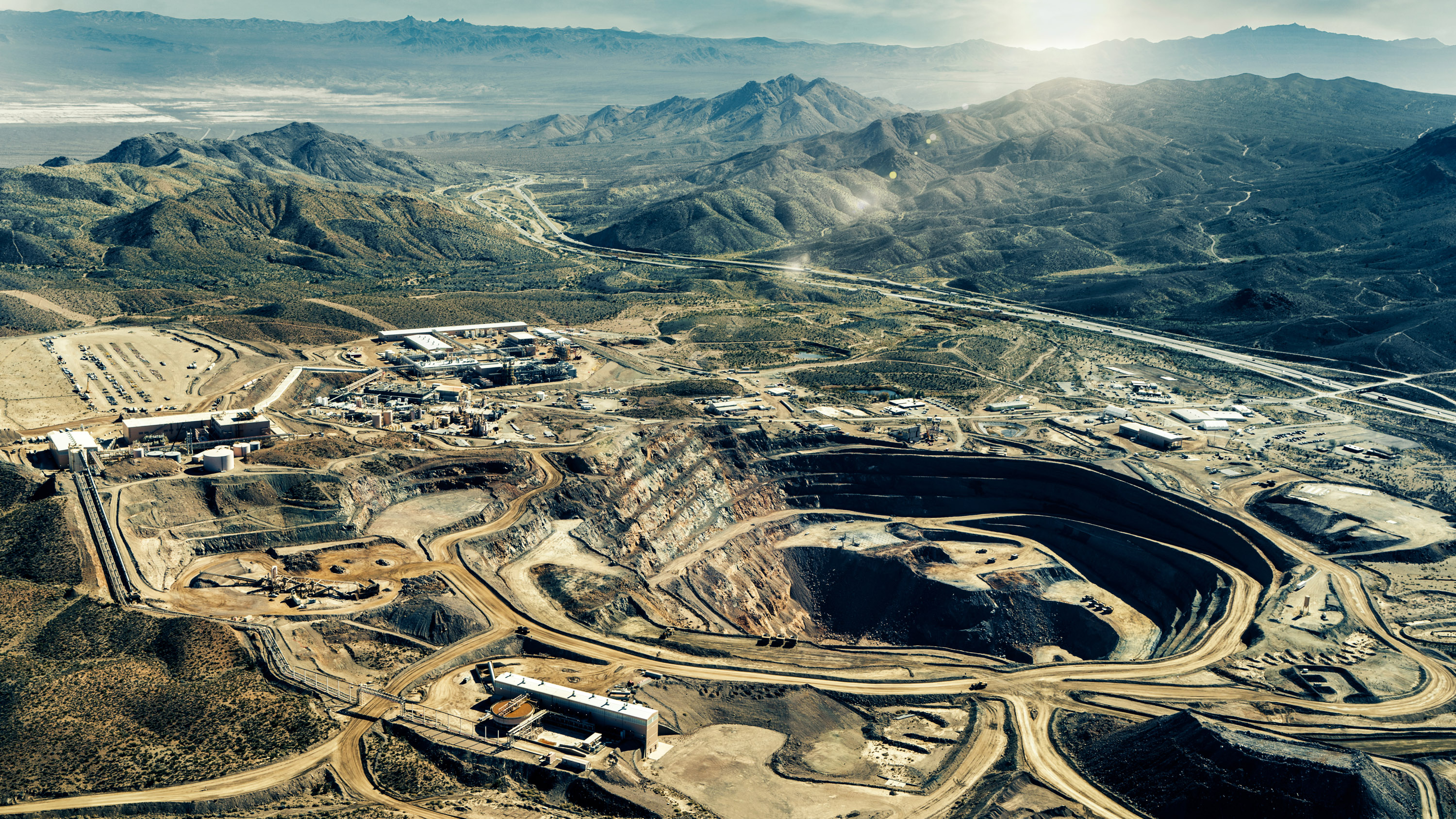2024 Climate Tech Companies to Watch: First Solar and its advanced solar panels
The US manufacturer is opening new factories and betting that a special material will make its thin-film solar cells more efficient.

First Solar is expanding production of its thin-film solar cells and opening new factories to meet a surge of demand. Meanwhile, it’s investing in perovskites—tiny crystalline materials that many view as a key solar technology of the future.
The world needs more electricity than ever, as the AI boom puts intense demand on data centers and more heat waves increase the use of air-conditioning. To reduce emissions and keep global warming in check, a larger share of that electricity must come from renewables.
Much of the growth in renewables comes from solar. And First Solar is one of the largest manufacturers of solar panels in the US, which is the world’s second-largest solar market after China. The company is benefiting from US tariffs on foreign-made solar panels and tax credits made available through the Inflation Reduction Act.
Today, Chinese firms produce the vast majority of the world’s solar panels. Most build cells that incorporate a layer of silicon to absorb the sun’s light and awaken electrons within, which then flow out as current. Instead of silicon, First Solar’s cells rely on a thin film made from two other elements: cadmium and tellurium. These cells can be produced more quickly than silicon cells, using less energy and water.
But there’s still room for improvement in the cells’ performance. Today’s best silicon solar panels convert roughly 25% of the sun’s energy into electricity, and cadmium telluride tends to lag behind that. To boost efficiency, First Solar is now looking to incorporate a new class of materials called perovskites into its cells. These tiny crystals absorb different wavelengths of light from those absorbed by silicon or cadmium telluride. Cells that add perovskites to the mix—known as perovskite tandem solar cells—could potentially convert even more of the sun’s energy into electricity.
First Solar is among a handful of companies exploring how to layer these crystals into commercial solar cells to improve performance. Last year it acquired a firm called Evolar, a leader in thin-film and perovskite research, to further this aim.
Key indicators
- Industry: Renewable energy
- Founded: 1999
- Headquarters: Tempe, Arizona, USA
- Notable fact: First Solar’s backlog of orders totals 76 gigawatts and stretches out to 2030.
Potential for impact
Globally, solar energy accounted for more than three times as much new capacity for electricity generation as wind in 2023, according to the International Energy Agency. There are a few reasons why—the price of panels has dropped dramatically in the past 20 years as production ramped up, and they’re relatively easy to install and maintain.
Solar’s future looks just as bright—global solar capacity is expected to reach nearly 2,000 terawatt-hours this year, and the IEA says we could see it quadruple by the end of the decade. In the US, First Solar’s expanding production and its recent investments into perovskites will shape the solar market for years to come.
Caveats
One of the biggest obstacles to bringing more utility-scale solar plants online in the US is hooking these projects up to the grid once they’re built. The federal agency that approves grid interconnections has a backlog of requests. Right now it takes about five years, on average, for a new solar plant to open. Recent reforms aim to make this process faster, but their impact is still unclear.
Compounding this problem is a shortage of transformers, which step the voltage of electricity up or down; these are crucial to managing the flow of clean energy across the grid. And there are siting challenges, since developers must obtain permits and some community groups oppose large installations. First Solar’s customers are overwhelmingly based in the US and include developers of new solar projects that face all these issues, which could limit the company’s growth.
The fate of the US solar industry is strongly influenced by domestic policy, and the US presidential election could affect First Solar’s expansion plans in a few ways (even if tax credits to US manufacturers have enjoyed broad bipartisan support). Though it seems unlikely that the IRA would be repealed, it’s possible that a new administration could amend parts of it.
The new president could impose higher tariffs and place more restrictions on imports. First Solar has publicly supported such tariffs—which critics blame for the high price of US panels. Or the president could lower tariffs and decrease import restrictions. Uncertainty on policy matters could make developers less willing to place new orders until a new administration is in place.
And there’s no guarantee that the company can make tandem cells work. Perovskites are notoriously unstable and break down in the sun—rather inconvenient for a solar material. First Solar will need to find new ways to produce and package them at scale, and prove to customers that these panels will work reliably for years once installed.
Finally, though First Solar’s panels avoid concerns about forced labor in the supply chain for silicon produced in China, such problems have also occurred in the company’s own supply chain.
Next steps
Later this year, First Solar will begin producing miniature versions of tandem solar panels at a factory in Ohio. If these panels perform well in tests, the company will manufacture full-size prototypes at its new R&D center nearby.
Meanwhile, First Solar is building new manufacturing facilities to expand production of its cadmium telluride panels. The company opened its first factory in India earlier this year and now manufactures in four countries—India, the US, Malaysia, and Vietnam.
In the US, First Solar just opened a new plant in Alabama, with another to follow in Louisiana in 2025. By 2027, the company expects to have more than 25 gigawatts of annual manufacturing capacity—more than the total capacity of new utility-scale US solar installed last year.
Explore the 2024 list of 15 Climate Tech Companies to Watch.
Deep Dive
Climate change and energy

This rare earth metal shows us the future of our planet’s resources
The story of neodymium reveals many of the challenges we’ll likely face across the supply chain in the coming century and beyond.

Andrew Ng’s new model lets you play around with solar geoengineering to see what would happen
The climate emulator invites you to explore the controversial climate intervention. I gave it a whirl.

Want to understand the future of technology? Take a look at this one obscure metal.
Here’s what neodymium can tell us about the next century of material demand.
Stay connected
Get the latest updates from
MIT Technology Review
Discover special offers, top stories, upcoming events, and more.
